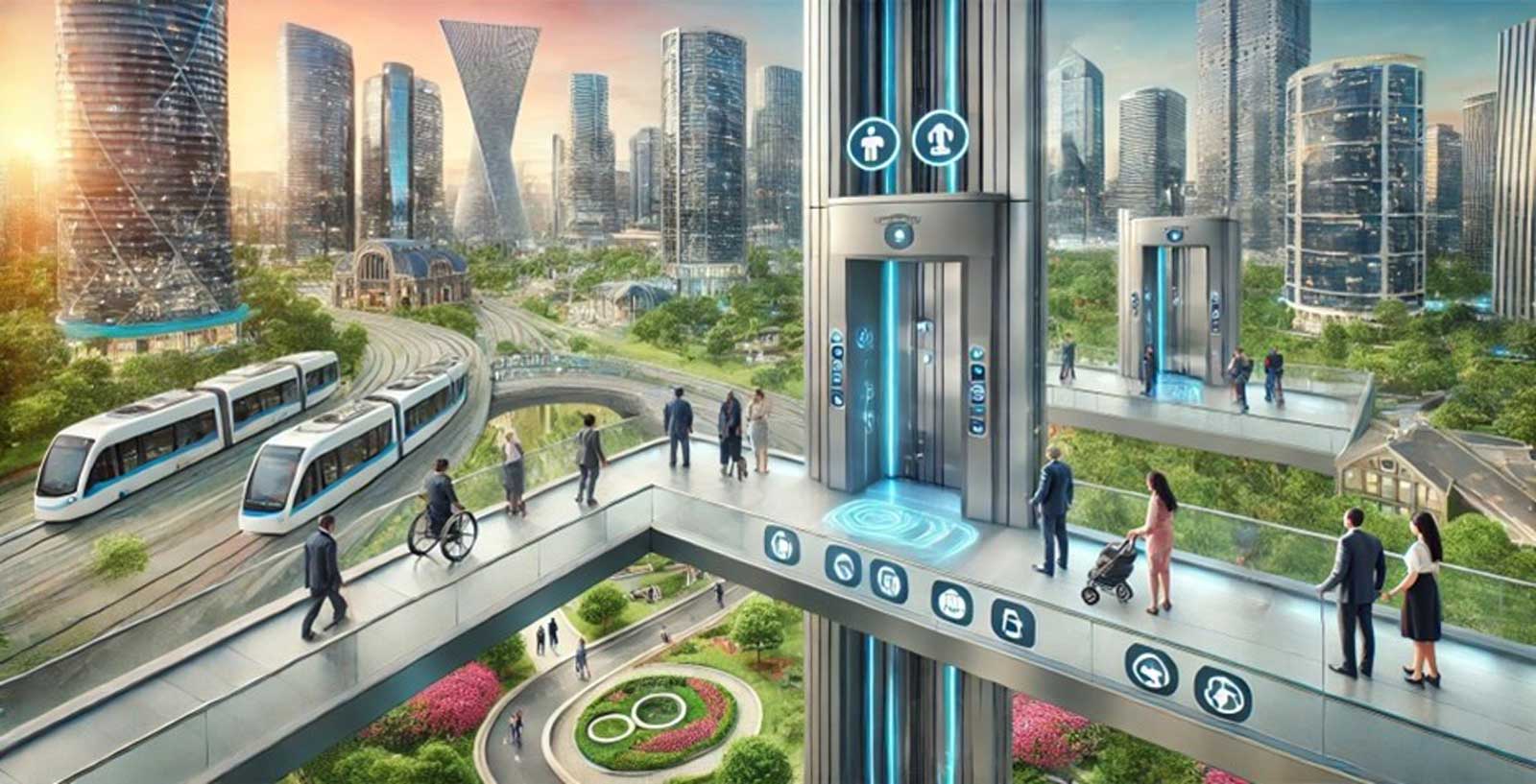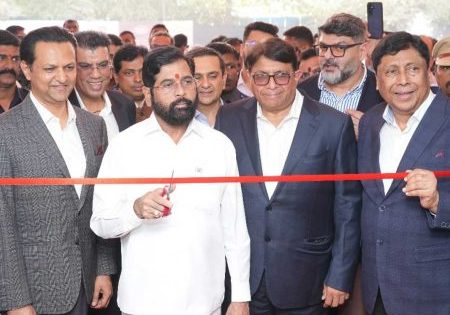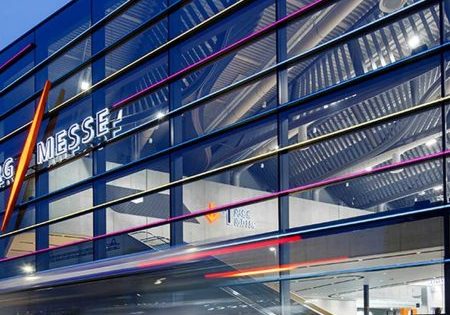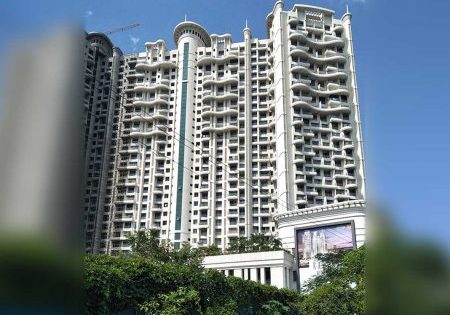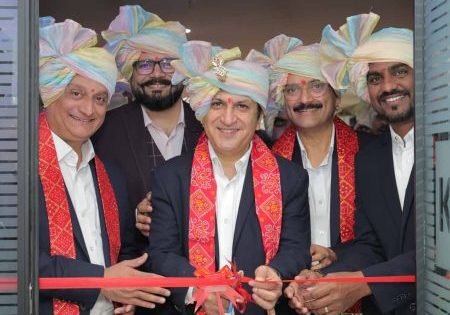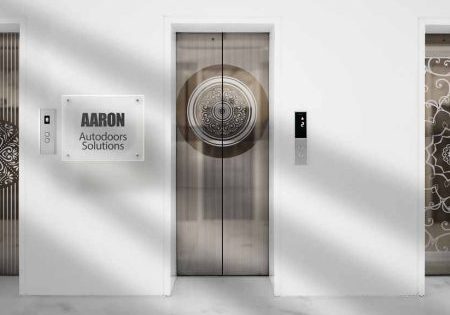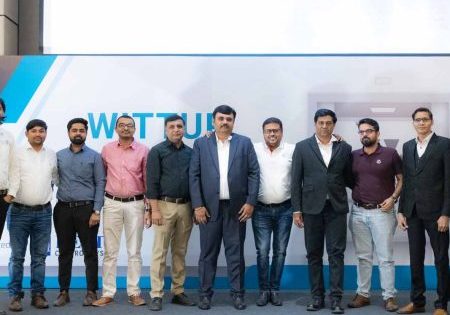A look at fundamental priorities and non-negotiables
As urban landscapes continue to grow, the role of vertical-transportation (VT) systems extends beyond mere convenience to become a critical component of inclusive and efficient infrastructure. Ensuring easy access for all users, including persons with disabilities, elderly individuals and children, is a fundamental priority. Compliance with universal design principles and local accessibility regulations enhances user-friendliness, making VT systems more inclusive. Additionally, safety standards remain non-negotiable, with features such as emergency braking mechanisms, fire-resistant materials and real-time monitoring ensuring passenger security.
Sustainability is also a key focus, with energy-efficient solutions like regenerative drives and LED lighting reducing environmental impact. The adoption of smart technologies, including Internet of Things (IoT) and AI-driven predictive maintenance, further enhances operational efficiency and minimizes downtime.
Keeping pace with rapid technological advancements, the latest updates in VT systems are redefining industry benchmarks. Smart elevators now feature destination control systems, facial recognition and touchless operation, improving both hygiene and passenger flow. IoT-enabled predictive maintenance is revolutionizing system reliability by monitoring elevator components in real time, predicting faults before they occur. VT solutions are also aligning with green building certifications such as LEED and BREEAM, reinforcing global sustainability goals.
Additionally, evolving regulatory frameworks are introducing stricter safety and accessibility norms, such as India’s Harmonized Guidelines and Standards for Universal Accessibility, ensuring more inclusive VT infrastructure. Meanwhile, the growing demand for high-speed elevators is shaping the future of urban skyscrapers, enabling seamless vertical mobility in high-rise developments.
To gain deeper insights, we engaged with more than 30 VT sellers, buyers and users through unstructured discussions. Their perspectives, given in the table, reveal a comprehensive outlook on how VT imperatives will evolve in India.
Key Trends and Stakeholder Perspectives
| Trend | VT Seller’s Perspective | Buyer & User’s Perspective |
| Smart and Connected Elevators | Promoting IoT-enabled predictive maintenance; Offering remote monitoring solutions; Subscription-based service models | Expecting proactive maintenance; Real-time updates via mobile apps; Intelligent traffic management systems and reduced breakdowns |
| Sustainability & Energy Efficiency | Positioning green elevators as cost-saving investments; Government-backed green compliance solutions | Lower operational costs; Eco-friendly designs; Power-saving VT solutions |
| High-Speed and High-Capacity Elevators | Selling high-speed elevators for commercial spaces; Custom solutions for metro projects; Double-deck and multi-car systems | Reduced waiting times and increased handling efficiency for better performance; Larger cabins combined with destination control system for peak hours performance; Smooth acceleration with minimal noise |
| Contactless & Touchless Technologies | Marketing touchless VT as hygiene priority; Biometric, voice, and mobile-based controls; Smart building integration | Hands-free operations; Biometric security; Workplace entry integration for security and streamlined passenger flow |
| Urbanization & Mass Transit Integration | Targeting metro, airports and railway stations; Durable VT for high footfall; Public-private partnerships for smart cities | Seamless connectivity; Crowd management solutions; Last-mile urban transport solutions |
| Modular & Adaptive Elevator Solutions | Offering retrofitting options; MRL (machine-room-less) lifts for space optimization; Affordable solutions for tier-2/3 cities | Cost-effective modernization; Compact, space-saving lifts; Faster installation timelines |
| Safety, Compliance & Regulations | Ensuring BIS and NBC 2016 compliance; Earthquake-resistant and auto-rescue features; AI-driven safety monitoring | Reliable emergency backups; Regulatory compliance; Well-documented safety testing; user confidence and comfort |
| Localization & ‘Make in India’ Push | Expanding local manufacturing; Cost-effective, India-specific solutions; Custom VT for real estate projects | Affordable solutions with faster delivery; Locally sourced parts for quick servicing; Climate-adapted VT solutions |
| Integration with Autonomous & Robotics Systems | Developing robot-assisted VT for commercial spaces; Smart logistics elevators for warehouses; AI-driven adaptive VT | AI-powered adaptation to usage patterns; Robot-friendly VT solutions; Smart home and office integration |
| Hyperloop & Magnetic Levitation Influence | Researching rope-free, magnetic levitation-based VT; Multi-directional elevator design; Collaboration with futuristic city planners | High-speed, zero-maintenance VT; Future-proof solutions for urban development; Silent, ultra-smooth rides |
To navigate the future of VT effectively, industry players must make strategic, focused decisions on innovation, sustainability and user-centric solutions. Building a resilient future requires investments in advanced technologies, such as AI-driven predictive maintenance and energy-efficient systems, to enhance reliability and minimize downtime. Companies must either build or acquire growth-enabling capabilities that align with evolving urban needs while balancing global goals with local ambitions, particularly through initiatives like “Make in India.” Engaging the digitally savvy youth cohort through hyper-personalization — such as app-based elevator controls, biometric access and intelligent traffic management — will be key to shaping user experiences. Additionally, fostering future-ready capabilities and talent will be essential in seizing emerging opportunities, ensuring that VT systems remain adaptable, inclusive and a cornerstone of sustainable urban mobility.
Conclusion
As India’s urban infrastructure expands, the imperatives of VT are evolving beyond basic functionality to encompass accessibility, safety, sustainability and technological innovation. Ensuring seamless access for diverse user groups, including the elderly and differently-abled individuals, is crucial in shaping inclusive cities. Industry stakeholders — sellers, buyers and users — are driving advancements through smart, high-speed and adaptive VT solutions tailored for India’s growing urban landscape.
Compliance with evolving safety and accessibility norms, along with the ‘Make in India’ initiative, is fostering locally manufactured, cost-effective solutions that cater to domestic and international markets. By embracing these imperatives, VT will continue to play a pivotal role in enabling safer, smarter and more efficient urban mobility.
Get more of Elevator World. Sign up for our free e-newsletter.
